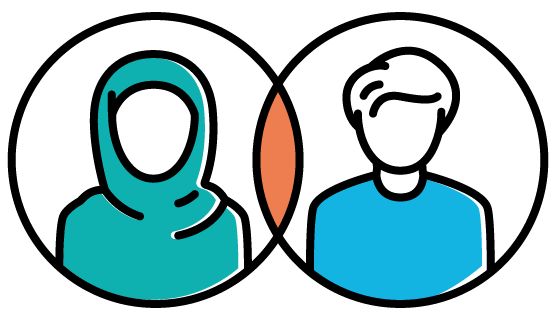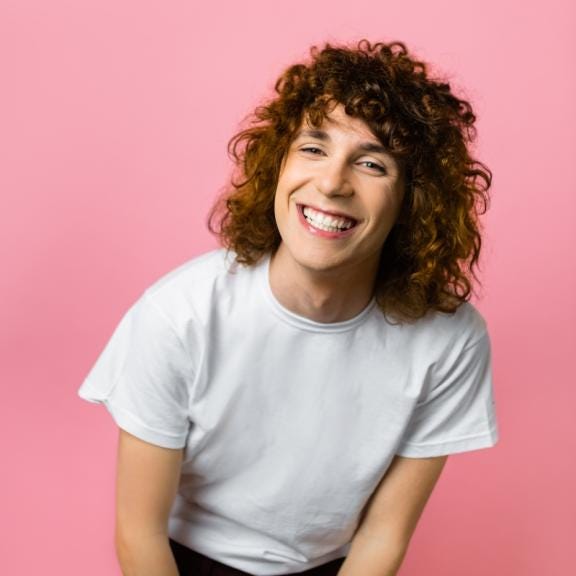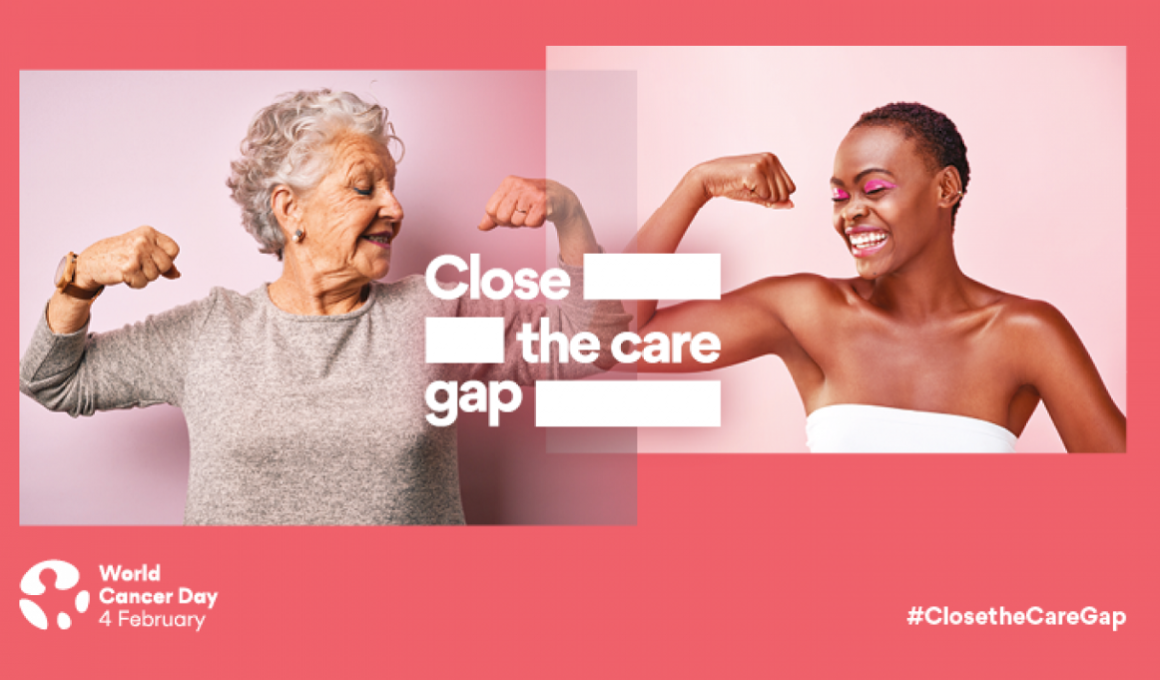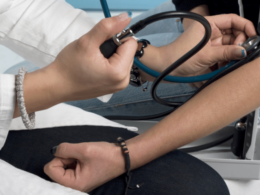The reality today is that who you are and where you live could mean the difference between life and death.
It isn’t fair. But we can change this.
Closing the gap in cancer care
World Cancer Day
February, 2022
Half the world’s population lacks access to the full range of essential health services.
When it comes to cancer, many of us are denied basic care, despite the fact that we live in a time of awe-inspiring advancements in cancer prevention, diagnosis and treatment.
This is the equity gap — and it’s costing lives.
People who seek cancer care hit barriers at every turn. Income, education, geographical location and discrimination based on ethnicity, race, gender, sexual orientation, age, disability and lifestyle are just a few of the factors that can negatively affect care.
The most disadvantaged groups are also more likely to have increased exposures to a host of other risk factors, like tobacco, unhealthy diet or environmental hazards.
The gap affects everyone. You might feel like the equity gap doesn’t impact you personally, but it likely does affect someone you know.
While it’s more pronounced in low- and middle-income countries, well-resourced countries show dramatic disparities too.
It’s almost guaranteed that the gap affects you or people in your community.
We can close the gap. The reality today is that who you are and where you live could mean the difference between life and death. It isn’t fair. But we can change this.

What do we mean by “inequity”?
In healthcare, inequality refers to the uneven distribution of resources. By contrast, inequity means unjust, avoidable differences in care or outcomes.
The difference may seem subtle, but closing the cancer care gap isn’t really about simply providing everyone with equal resources.
One size doesn’t fit all, and every challenge demands a different solution.
Equity is about giving everyone what they need to bring them up to the same level.
It’s about me and you; it’s about everyone
The equity gap is a reality for all countries everywhere, high- and low-income alike, and negatively affects people from all walks of life.
- For white women in the US, the five-year survival rate for cervical cancer is 71%. For black women, the rate is just 58%.
- In New Zealand, Māori are twice as likely to die from cancer as non-Māori.
- Childhood cancer survival rates are over 80% in high-income countries but as low as 20% in low-income countries.
- More than 90% of cervical cancer mortality occurs in low- and middle-income countries.
- Cancer kills nearly 10 million people a year and some 70% of those are aged 65 or older, yet older populations face disproportionate barriers to effective treatment.
- In refugee populations, cancer is more likely to be diagnosed at an advanced stage, leading to worse outcomes.
- Due in part to discrimination from healthcare practitioners, cancer screening among transgender people is lower than in the rest of the population.
- There are notable differences in cancer-related outcomes for rural and nonrural patients, even in high-income settings such as the US.
Progress points to a better future
Where there is progress, there is hope.
When people unite, when communities rally around the vulnerable and when individuals innovate and collaborate across borders, change is within reach.
Here are some examples that offer hope.
- In Nigeria, the Sebeccly Cancer Care and Support Centre helped patients navigate and access earlier cancer diagnosis and treatment with the launch of the digital tool Oncopadi.
- In Canada, several organisations collaborated across sectors on a series of measures aimed at closing the gap in healthcare for indigenous populations.
- Around the world, governments raised USD 8.817 billion in 2021 for Gavi, a global health partnership, to provide 84 million girls in low-resourced regions with HPV vaccinations to protect them from cervical cancer.
- Progress can take many forms, whether it’s a new partnership for delivering better screening services to rural communities or a neighbourhood banding together to provide transport to cancer treatment for a fellow resident.
Many equity gaps and injustices remain, but they can be solved with innovative ideas and actions if we work together.
What does an equitable world look like?
We will achieve health equity when every person has the opportunity to reach his or her full health potential without barriers or limitations created by social position or other socially determined circumstances.

The goal is simple: health equity now
The cancer care gap is not inevitable.
Our systems can be reimagined, a person’s situation can be improved, their knowledge about cancer can be increased and their access to services made easier.
Collectively, we can reduce inequity by:
- educating the public about cancer prevention;
- equipping healthcare professionals with skills and knowledge including about how inequity influences cancer care;
- strengthening primary health care delivered in communities;
- addressing through policy and programmes some of the social and economic factors that can negatively affect people’s health;
- increasing the resources — meaning both money and people — dedicated to cancer research, and tracking the burden of cancer nationally to more effectively shape our investments;
- implementing country-specific cancer prevention and control plans that address each country’s unique needs and resources.
As individuals, we have an important role to play too. How?
By raising our voices and pressure governments to address the root causes of these inequities and to treat cancer as an important health issue, and by challenging — directly, vocally and unwaveringly — stigma and discrimination in all its forms.
Inside the equity gap: 7 barriers that stand in the way of cancer care
Where you live. Who you are. Where you come from. What you do.
Who you love.
These are called the social determinants of health, and they represent the many factors that can unfairly stand between you and cancer prevention, diagnosis and treatment.
- Gender norms and discrimination
- Barriers for minority populations
- Poverty and socioeconomic status
- The rural-urban divide
- Age discrimination
- Refugee status and forced displacement
- Homophobia, transphobia and related discrimination
1. Gender norms and discrimination
Around the world, women and girls suffer from discrimination as a result of misogyny, stereotypes and expected gender roles. Certain cultural and religious contexts may further limit access to timely cancer care. Stigma and ostracisation surrounding cervical and breast cancers can make women reluctant to seek cancer screening. In some parts of the world, a woman may need tacit approval or explicit permission from the male head of household to visit a doctor.
Men also face the negative effects of gender discrimination and societal and cultural taboos. Social norms surrounding masculinity may make them less willing to discuss health concerns and consider certain life-saving procedures, such as surgery for early-stage prostate cancer, out of concern for the possible side effects, which can include incontinence or impotence.
2. Barriers for minority populations
Racism has a profound effect on a person’s ability to access cancer care and minority populations often face serious barriers in accessing their countries’ basic health services.
For example, indigenous people living in over 90 countries represent 6% of the world population but account for 15% of the extreme poor. Indigenous people face worse health and poorer outcomes. These factors, combined with systemic discrimination, human rights abuses, language and cultural differences and many other factors, are worsened by a higher exposure to poor nutrition, substance abuse and other behaviours that constitute high-risk factors for cancer.
3. Poverty and socioeconomic status
Poverty seriously limits access to quality cancer care. In high- and lower-income countries alike, lower socioeconomic status means less access. Countless obstacles tied to one’s financial means include transport to hospital from remote locations, inability to take time off work or find childcare to accommodate screening or treatment and a lack of health insurance or other financial means to manage the high monetary cost of care.
Regardless of where you live, if you are diagnosed with advanced cancer and are a low-income patient, have primary education only or lack health insurance, you are more likely to experience financial catastrophe or die within 12 months of a cancer diagnosis.
4. The rural-urban divide
People living in rural areas face many obstacles standing between them and their chances of surviving cancer. A lack of prevention, screening and treatment services likely means travelling long distances to access the necessary resources. The financial burden of this travel, alongside the need to secure childcare and time off work, can be insurmountable.
As a result, where you live too often determines if you live. Rural patients are frequently diagnosed at later stages and are less likely to receive appropriate treatment, receive follow-up or supportive services or be included in clinical trials that may represent their best chance at survival. These challenges can lead to interrupted treatment, and these barriers are compounded by the significant overlap between rural and indigenous, lower-income and older populations.
5. Age discrimination
How old you are shouldn’t decide the quality of cancer care you receive, yet this is the reality for many. Cancer can develop at any age, but the risk of that happening rises dramatically with age. In fact, more than half of people who have cancer are 65 or older. Because early cancer symptoms can be mistaken for everyday pain or minor illnesses associated with old age, many cancers in older patients are diagnosed later. This is exacerbated by a lack of programmes and services designed to respond to the needs of older adults. Also, while more older people are diagnosed with cancer than younger people, older patients are vastly underrepresented in the research that sets the standards for cancer treatments. Ageism that pervades cultures and institutions is one major contributing factor to these imbalances.
Cancer and ageing
Studies highlight how older populations are denied equitable cancer care1, 2, 3.
A high proportion of older women with a particular form of breast cancer receive less chemotherapy than their younger counterparts — despite evidence of the treatment’s efficacy.
- More than 70% of deaths caused by prostate cancer occur in men aged over 75, who usually have more aggressive disease. Few older patients, however, receive treatment for localised prostate cancer, and in most cases they are denied access to chemotherapy for advanced disease.
- Colorectal cancer is another disease disproportionately affecting older people, yet the evidence suggests that optimal treatment is not being provided to older patients.
6. Refugee status and forced displacement
In countries facing political, financial and social instability — from war, social upheaval or natural disaster — cancer organisations must deal with harrowing shortages of resources or even a complete breakdown in basic health services. The majority of people with advanced stage cancer in war-affected areas, for instance, are simply unable to get appropriate care, as regions become inaccessible, hospitals and health centres are damaged or destroyed and health workers are injured, killed or displaced.
Beyond this, cancer patients in conflict and post-conflict areas, as well as refugees fleeing these regions, experience a unique set of obstacles, including emotional or physical trauma, limited financial resources and language or cultural barriers that can dramatically impact access to effective cancer care.
7. Homophobia, transphobia and related discrimination
Around the world, lesbian, gay, bisexual, transgender, queer and intersex (LGBTQI) people face hostility and discrimination by the people around them. They are also more likely to face ignorance or outright prejudice from health practitioners. Furthermore, fear of poor treatment by the medical establishment understandably drives many people away from timely and effective cancer care.
Such discrimination takes an insidious toll and can lead to behaviours known to increase cancer risk — such as drinking, smoking or illicit drug use — as people seek ways to self-medicate and cope with a world that is far too often hostile to one’s very existence.
- https://pubmed.ncbi.nlm.nih.gov/34043411/
2. https://pubmed.ncbi.nlm.nih.gov/29925401/
3. https://www.bmj.com/content/348/bmj.g1614

Understanding inequity is the first step
Inequity is everywhere. These seven factors represent just a few of the ways that people all over the world, from all walks of life, are deprived of cancer care. The truth is that no list could be exhaustive — there are countless unjust barriers to accessing quality cancer care, and many of these prejudices are deeply ingrained in our cultures and healthcare systems.
But obstacles are made to be overcome. There is hope. The first step is recognising inequity when we see it. Only then can we begin to challenge our own assumptions and biases, listen to the perspectives of people living with cancer and fight to close these gaps once and for all.
World Cancer Day is an initiative of the
Union for International Cancer Control (UICC)
Stay updated
© 2022 UICC | World Cancer Day, All rights reserved
About the World Cancer Day
World Cancer Day held every 4 February is the global uniting initiative led by the Union for International Cancer Control (UICC).
By raising worldwide awareness, improving education and catalysing personal, collective and government action, we are all working together to reimagine a world where millions of preventable cancer deaths are saved and access to life-saving cancer treatment and care is equitable for all — no matter who you are or where you live.
TAGS: Health Inequity; Access to Cancer Treatment












